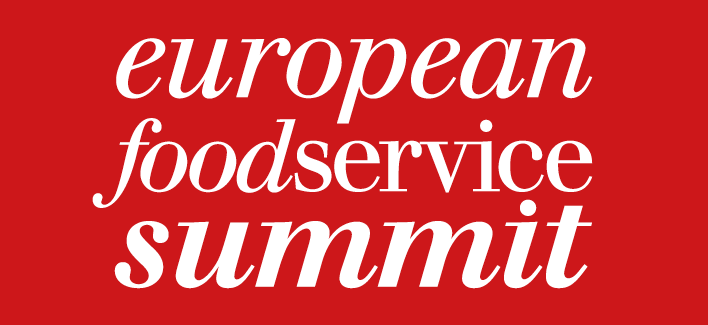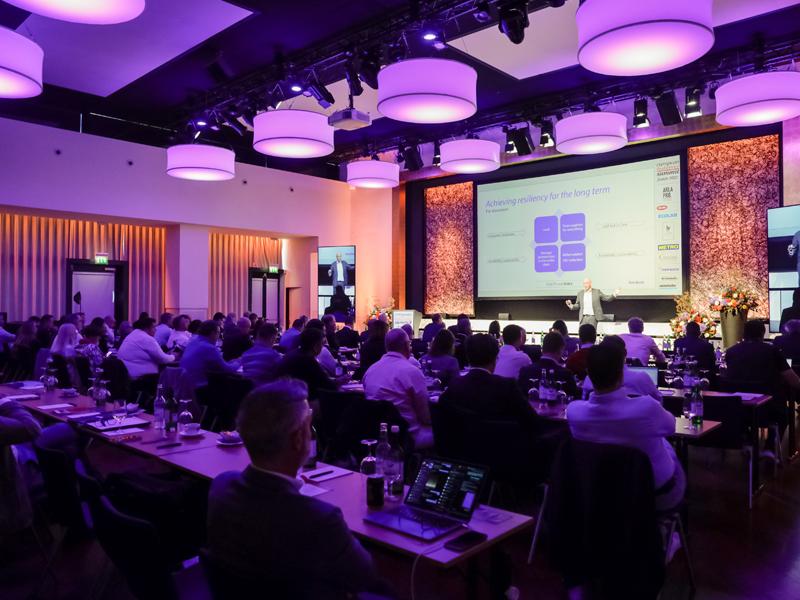Aiming for resilience
Geopolitics, supply chains, inflation and other challenges are putting significant pressure on everyday business. How should foodservice operators respond? Insights from Summit-speaker Cyrille Filott.
At the 23rd European Foodservice Summit in Zurich, Cyrille Filott of Rabobank gave an overview of the geopolitical and economic developments that have a significant impact on both day-to-day foodservice operations and consumer behavior. Filott used various examples to show how closely factors such as geopolitics, inflation, supply chains and scope 3 emissions are intertwined
A return to normalcy from 2019? The global strategist thinks this scenario is unlikely. Instead, we should prepare for what lies ahead. Resilience is the order of the day, he says: “Companies need to prove they have what it takes to weather the current turmoil.” Understanding and tracking geopolitical developments as well as entanglements is therefore critical, he said, as they can lead to further supply chain disruptions.
Minimizing supply chain risk
Example: We have already seen the enormous impact the war in Ukraine is having on supply chains, goods availability and prices. But there is also a crisis between China and Taiwan. How dependent are companies and their supply chains on this region? Depending on the individual response to this question, the next major challenges may lie ahead. After all, “Nearly half of the world’s container fleet and a whopping 88 percent of the world’s largest ships by tonnage passed through the Taiwan waterway this year.” In other words, if conflict does occur, all container ships will have to reroute – with far-reaching implications for the entire global economy.
So how to act? Filott brings up the example of a company that is considering moving the assembly of its products to its main market, the United States. Localize production – an expensive investment, but one that also helps minimize risk and provides security. In uncertain times, these are the categories in which companies must think today.
Energy prices as inflation drivers
Filott used the example of artificial fertilizer to illustrate the many levels on which the cost explosion in energy prices is impacting foodservice companies. “Recently, 75 percent of fertilizer capacity was shut down due to high gas prices,” the analyst reported. The background: artificial fertilizer is produced from natural gas. On the one hand, this fertilizer shortage will lead to exorbitant price increases, which in turn will affect food purchase prices. On the other hand, a by-product of fertilizer production is CO2, which is used for dry ice and carbon dioxide. Here, too, the capping will be reflected, for example, in the prices and availability of frozen products and carbonated soft drinks
Already today, the sharp rise in prices for goods and utilities is eating away at catering businesses. But the end is not yet here, Filott warned, citing delays in passing on price increases: “There is more inflation that needs to work its way through the system to the consumer.” The eventual expiration of hedging contracts for commodities like wheat, palm oil or other food ingredients will also lead to further price increases that will be passed on to restaurateurs and end consumers, he added.
How does the consumer react?
We will come into a position, where economic growth will be negative for a short period, or even longer period,” Filott predicts. Why? Last year’s savings have been depleted, after much pent-up demand for experiences, going out is normalizing, wallets are empty, and consumers are also watching rising energy and consumer goods prices with concern.
Consumers are reacting by downgrading, both products and distribution channels. Cheaper solutions are in demand: food retail instead of food service, supermarkets instead of specialty stores, private label instead of branded goods.
Scope 3 emissions
What role does sustainability play in companies’ resilience efforts? According to the Rabobank expert, it is also a key factor in making companies future-proof. And many companies have already set themselves ambitious sustainability goals in order to meet the EU’s zero emissions target by 2050.
But even in these plans and intentions, the supply chain must be significantly involved. That’s because Scope 1 and 2 emissions, meaning those that come directly from operations, amount to a minimum: “For foodservice companies, 95 percent of emissions are outside their direct control, coming from the supply base: logistics, packaging, beef, dairy, etc.” In other words, only by talking to your suppliers and their suppliers and their suppliers, and ultimately to the farmers, can you effectively reduce CO2 emissions. So again, recognizing and understanding connections and acting accordingly is the key to success. According to Cyrille Filott, the overarching challenge is “Scale & Agility”: having enough people working on solutions and being agile enough to deal with future crises.





